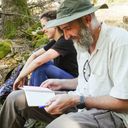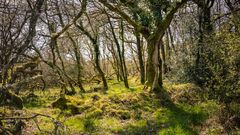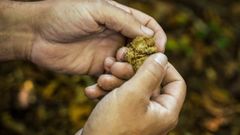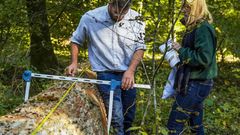
Raising awareness, taking action
By managing forests sustainably and preserving biodiversity, we can respond to the urgency of climate change!



That’s how many trees we’ve planted or sustainably managed since our launch in 2014.
Our biodiversity conservation includes beehives, wetlands, ponds and peatlands.
We have commercial and expert field forestry operations across Europe.
Companies work with us to take meaningful action and meet their ESG goals.
Preservation
We plant and manage forests in Europe to create resilient carbon sinks by promoting biodiversity. We work over the long term to sequester carbon dioxide and limit extreme weather events.

Raising awareness
We are advocates for the beauty and biodiversity of forests. We share and explain the urgent need to care for forests with the general public and those in power.

Value
We are convinced that sustainable development can have both environmental and economic benefits — forests can provide and flourish at the same time.

We support and develop close-to-nature forestry. We favour irregular forestry management method that is conducive to biodiversity and the long-term sequestration of carbon. In line with the forestry supported by the European association Pro Silva, of which we are a member, we manage our forests according to the principles of continuous cover, mixed-species forestry. Today, this type of forest management is the most favourable for the dynamic conservation of forests over the very long term, without sacrificing their economic function.
Our supply and distribution chain is local to each forest and its community. We work with expert partners at each stage of the sustainable forestry management process. We are convinced that local, sustainable actions are the best way to deal with the current climate crisis and biodiversity loss.
There is always a social aspect to our forestry, as we make sure we work with inclusive and solidarity-based companies.
We are a B Corp-certified company, and our carbon sequestration methodology is certified by Bureau Veritas. All our forests are PEFC-certified or in the process of becoming PEFC-certified; five of them have the FSC label. All these certifications testify to the quality of our work and our commitment to fighting the climate crisis as effectively as possible.
At theParis Agreement, a commitment was made to limit global warming to +1.5°C above the pre-industrial era. But in the latest report from the IPCC, the experts declared that this target had become unattainable. This means that the effects of climate disruption are likely to be far more disastrous than predicted. We are living in a climate emergency as the loss of biodiversity and the sixth mass extinction of species continue to accelerate, under the pressure of extremely rapid climate change. Theemergency therefore lies in the need for us to act to reverse these processes, which were set in motion by the industrial revolution and which we can still control.
Forests, oceans and wetlands are vast carbon sinks. But to be effective, they need to be in a good state of conservation, which climate is not conducive to. So to avoid falling into a positive feedback loop, we must start by drastically reducing our GHG emissions. Achieving carbon neutrality means striking a balance between our carbon emissions and the absorption of carbon from the atmosphere by carbon sinks. We will be able to claim carbon neutrality when, on a global scale, our greenhouse gas emissions do not exceed the threshold of what carbon sinks can store. Once this stage has been reached, we will need to continue sequestering the excess carbon emitted into the atmosphere since the beginning of the industrial period.
The world climate is based on a balance that is not static and has taken a long time to stabilise. It evolves naturally over long periods, but human activities are disrupting its cycles and endangering its equilibrium through greenhouse gas emissions. By accumulating in the atmosphere, these gases form a barrier around the Earth that limits the re-emission of solar radiation into space. It's as if we had installed a greenhouse around our planet. By doing this, we are disrupting the fragile balance that has slowly been established. Drawing resources from the soil in order to transform them is responsible for most of the carbon emissions. We therefore need to reduce our use of fossil fuelsto curb climate change.
To respond to theclimate crisis, civil society as a whole can get involved. The Member States of theEuropean Union and the United Nations are putting in place standards to help countries and businesses reduce their emissions and contribute to the creation of carbon sinks. They are also developing legislation that will inevitably lead companies to reduce their GHG emissions and develop actions to contribute, as they will be obliged to present extra-financial reports as part of the CSRD.
Individual citizens can also get involved by reducing their carbon footprint and by supporting actions that promote biodiversity and carbon sinks (forests, peat bogs, etc.). But in this fight for a more sustainable future, businesses are in the front line, since they have large emissions but also the means to act on a large scale.
EcoTree is authorised by the French financial regulator (AMF) and our work is rigorously and regularly reviewed by independent forestry experts and "watchdog" organisations.